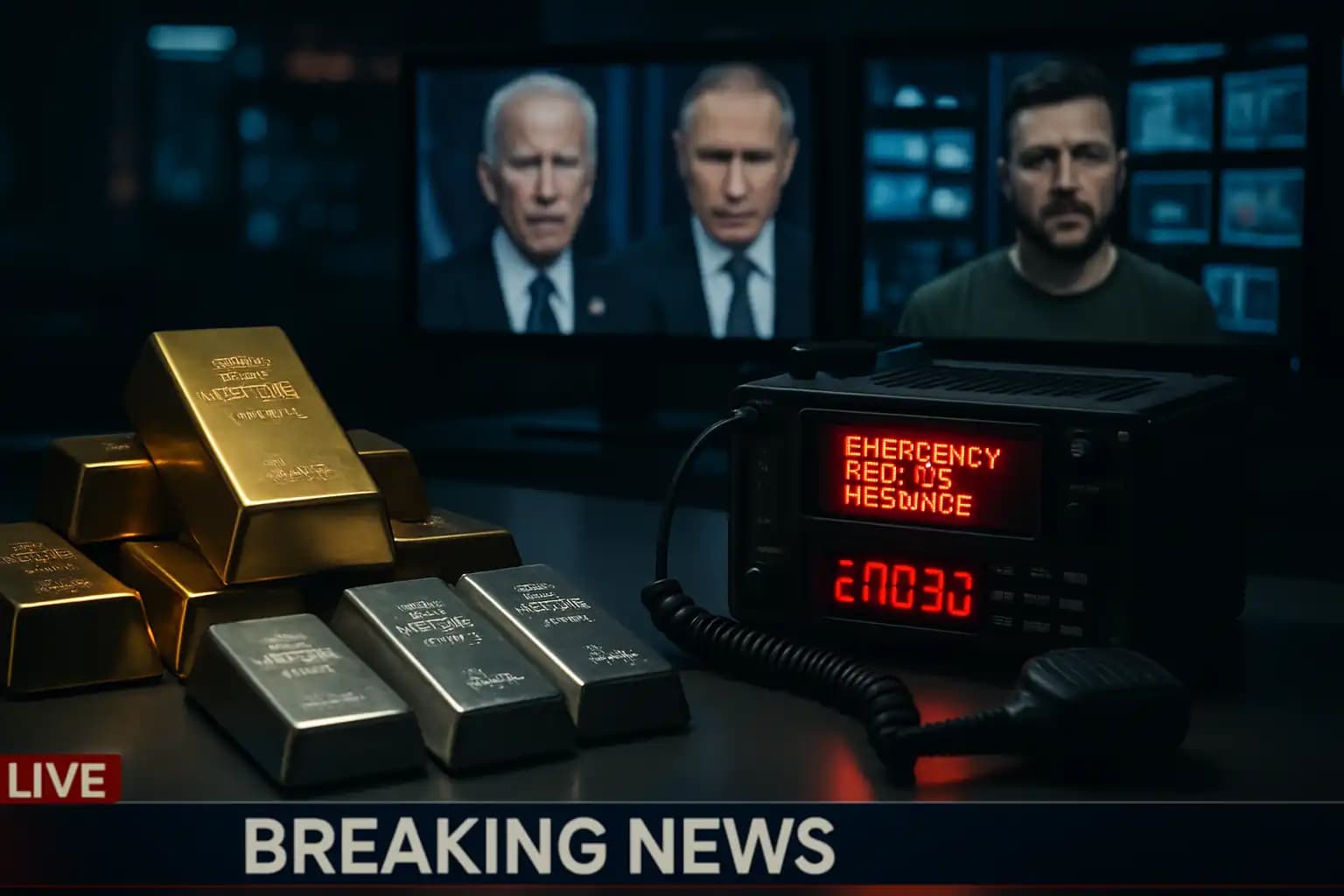When international threats emerge and metals prices soar, it’s not just your local doomsday prepper tuning in. Wall Street, defense planners, and even conspiracy trackers scramble for answers. Recently, alarming headlines surfaced: claims that Russia threatened former president Donald Trump’s life, gold and silver soared to new highs, and mysterious Emergency Action Messages (EAMs) blared across military radios. Is global security truly at a tipping point, or is this the jittery pulse of a drama-addicted world?
Kremlin Statements, US Retaliation: Sorting Fact from Spectacle
Kremlin officials downplayed talk of direct threats against Trump. According to recent coverage by DW, Moscow urged a reduction in nuclear rhetoric after inflammatory remarks by former President Dmitry Medvedev. U.S. submarines went on alert, but Russia’s official stance—stated by Kremlin spokesperson Dmitry Peskov—insisted there was “no interest in escalation” despite the noise from both sides. While many stories about direct threats to Trump circulated on social media, credible outlets pointed to war-of-words posturing rather than credible assassination plots. Public debate increasingly focuses on the broader implications of Trump’s polarizing leadership, nuclear tensions, and propaganda’s role in stoking Western anxiety.
For more context on how shadow conflicts shape international headlines, see this recent investigation into apocalyptic anxieties reverberating through both boardrooms and political backchannels.
Gold and Silver Surge on Geopolitical Alarm
Metals markets have proven their reputation as safe havens. As detailed by World Bank reporting, gold prices surged nearly 25% in the first half of 2025, reaching record highs in June amid “escalating geopolitical tensions and elevated economic uncertainty.” Silver also jumped, gaining nearly 20% in the same timeframe. Analysts attribute this spike to a deadly mix: confrontational nuclear rhetoric, new US-Russia sanctions, and fears that policy missteps could spiral out of control. This behavior echoes safe-haven moves during crises, with many citizens (not just billionaires) reevaluating disaster planning, as explored in this in-depth analysis of elite prepping psychology.
It’s not just investors; governments and central banks are stockpiling gold as geopolitical hedges. This surge in hedging mirrors behaviors seen during previous escalations, as detailed in recent field reports on Middle Eastern conflicts.
Nuclear Doomsday Radio: EAM Anomalies Fuel Speculation
The rise in US Air Force Emergency Action Messages—digitally encrypted broadcasts signaling changes in nuclear posture—added paranoia to already tense markets. As Interesting Engineering documented, two unusual EAMs sent in June 2025 coincided with rising tensions and significant US military events, including President Trump’s birthday and the U.S. Army 250th Anniversary Parade. While EAMs are routine for maintaining readiness, analysts and hobbyists tracked abnormally long broadcasts—fueling speculation about military readiness or hidden threats.
What is known: EAMs are standard, but their timing and frequency can signal shifts in military posture to outside monitors. The technology and history of these messages are explained in this technical summary. Such broadcasts rarely precede open hostilities, but during nuclear tension, they amplify fears—both rational and irrational—across the digital landscape, as explored in this deep dive into Cold War radio legends.
Why It Matters: Panic, Policy, and Preparedness
So what’s real, and what’s drama? Putin’s circle, the Trump campaign, and gold markets benefit from heightened tension—but the risks of nuclear miscalculation and panic are very real. Authorities from NATO and the UN warn that ambiguous military, financial, and political signals can increase instability. Recent years reveal that “doomsday radio” headlines mix ritual with risk, making sober analysis essential. For ongoing, high-caliber scrutiny at the edge of crisis and opportunity, follow Unexplained.co.
Meanwhile, remain vigilant of the signals and the signals within those signals. Want more real-time context? Consult this field report on world war risk escalation, and never forget the startling parallels between modern crisis messaging and the “strategic ambiguity” used in Cold War brinkmanship. As the latest doomsday signals fade, policy—not panic—remains the only lever bringing us back from the brink.




